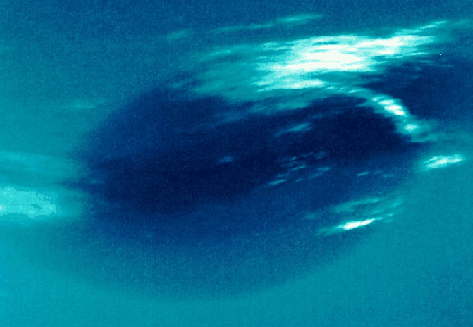
|
Credit & Copyright: Voyager Project, JPL, and
NASA
Explanation:
When NASA's Voyager 2 spacecraft flew by distant Neptune in August of 1989,
astronomers were shocked. Since
Neptune receives only 3 percent
the sunlight Jupiter does, they expected to
find a dormant, dark, frigid planet. Instead, the
Voyager images
revealed evidence of
a dynamic and turbulent world.
One of the most
spectacular discoveries was of
the Great Dark Spot, shown here in close-up.
Surprisingly, it was comparable in size and
at the same relative southern latitude as
Jupiter's Great Red Spot, appearing
to be a similar rotating storm system.
Winds near the spot were measured up to 1500 miles per hour, the strongest
recorded on any planet.
The Voyager data also revealed that
the Great Dark Spot varied significantly in size during the brief
flyby. When the
Hubble Space Telescope viewed the planet in 1994,
the spot had vanished -- only to be replaced by
another dark spot in the planet's northern hemisphere!
|
January February March April May June July August September October November December |
| ||||||||||||||||||||||||||||||||||||||||||||||||
NASA Web Site Statements, Warnings, and Disclaimers
NASA Official: Jay Norris. Specific rights apply.
A service of: LHEA at NASA / GSFC
& Michigan Tech. U.
Based on Astronomy Picture
Of the Day
Publications with keywords: Neptune - dark
Publications with words: Neptune - dark
See also:
